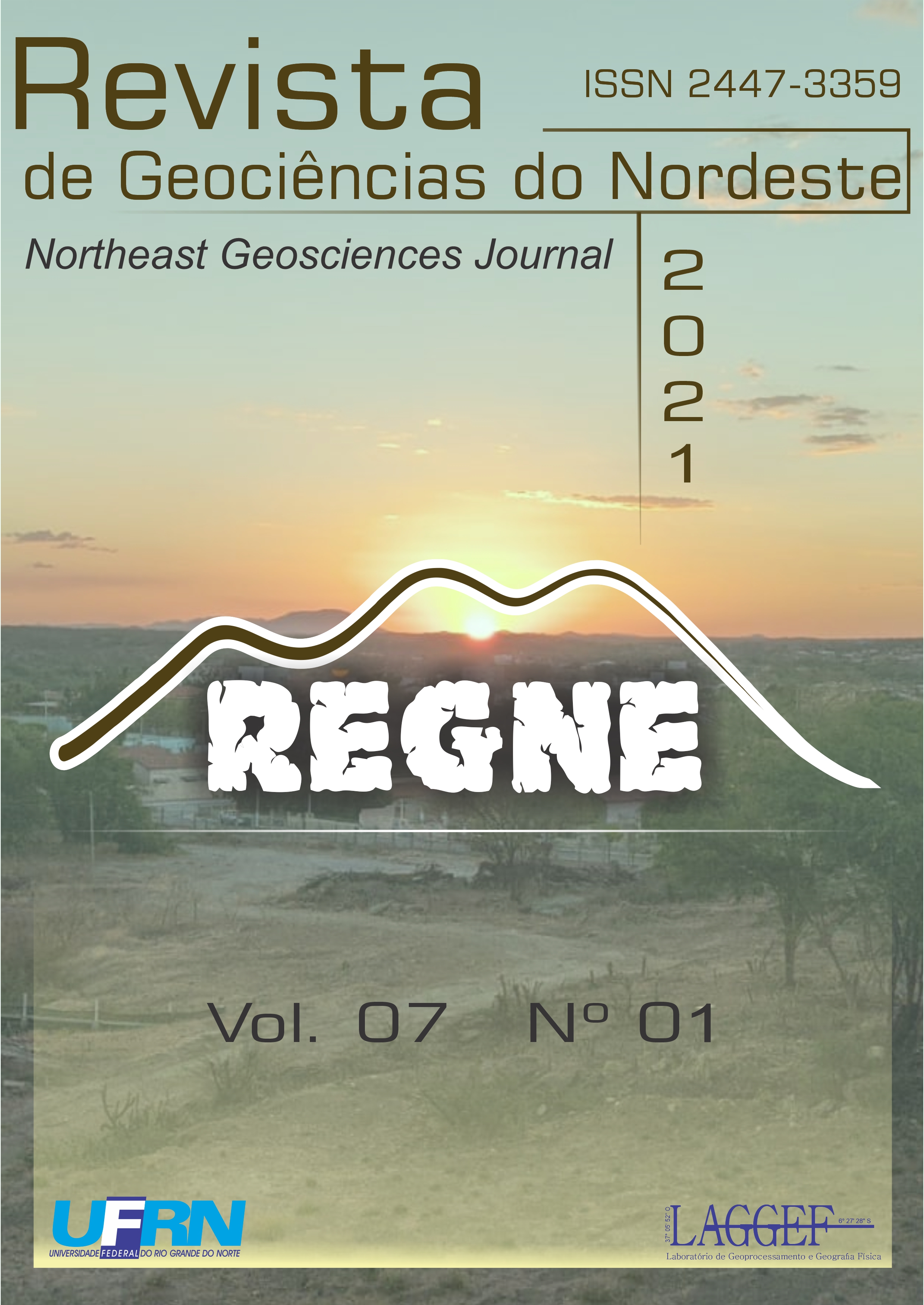GEOMORPHOLOGICAL PROCESSES AND LANDSCAPE EVOLUTION IN THE BRAZILIAN SEMIARID
DOI:
https://doi.org/10.21680/2447-3359.2021v7n1ID20692Abstract
Geomorphological processes are responsible for promoting transformations in the semiarid landscape. Weathering is responsible for decomposing rocks, forming new materials and altering the rocky surface. In the semiarid region on crystalline rocks, weathering allows the formation of soils, such as Luvisols and litholic Neossols, mainly in the areas of metamorphic rocks, and in granitic outcrops, it produces a set of specific features that are responsible for their evolution. Soil erosion is predominantly due to runoff, producing high rates on the slopes and silting up of river beds. In general, erosion processes and soil removal are faster than weathering and the formation of new materials. Thus, during the evolutionary process, small residual regoliths will result, often exposing the rocky body. This condition was characterized by Gilbert (1877) and was called "weathering limits".
Downloads
Downloads
Published
How to Cite
Issue
Section
License
Copyright (c) 2021 Revista de Geociências do Nordeste

This work is licensed under a Creative Commons Attribution 4.0 International License.


 Português (Brasil)
Português (Brasil) English
English







